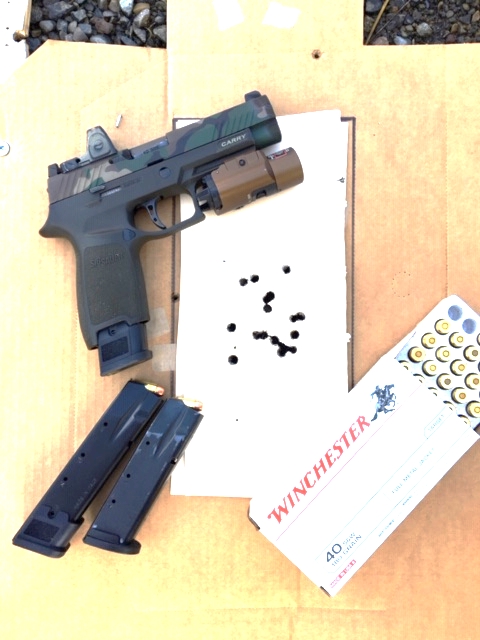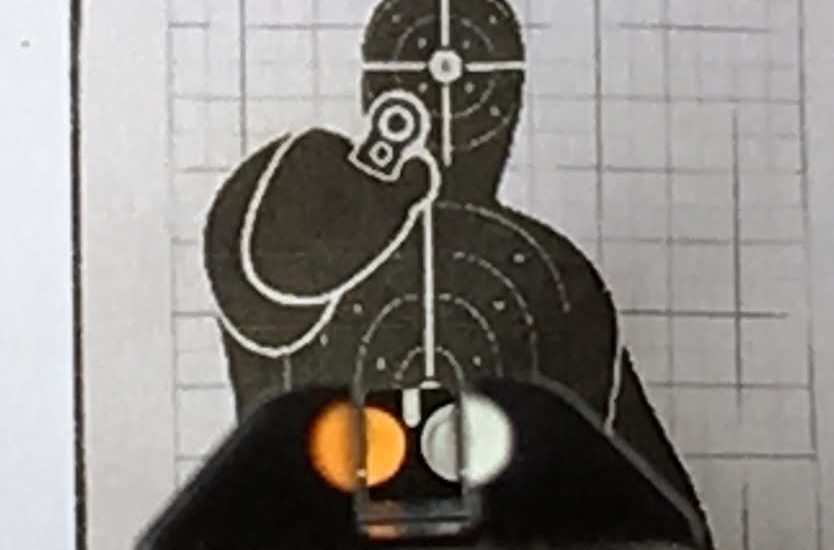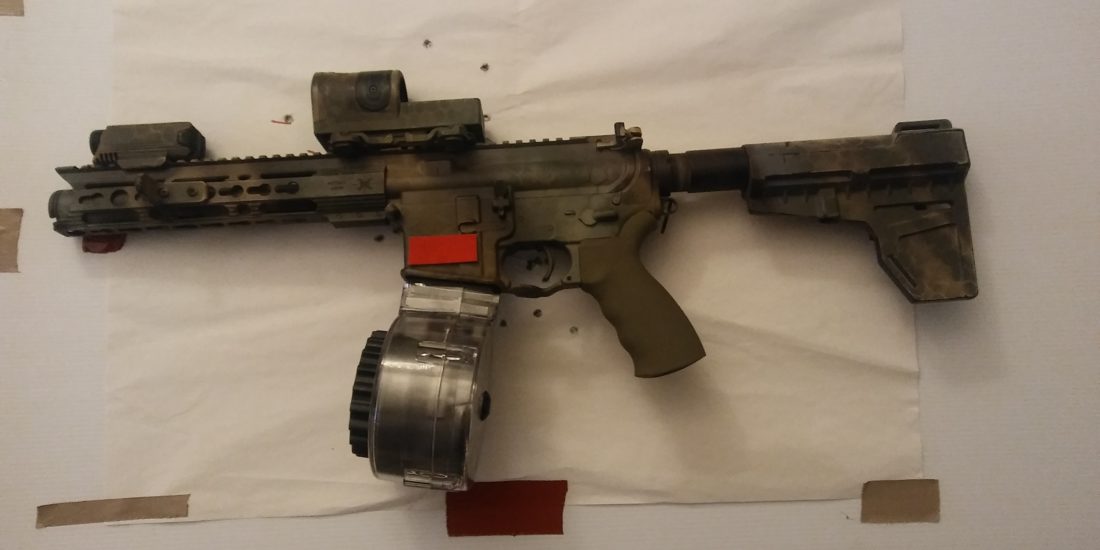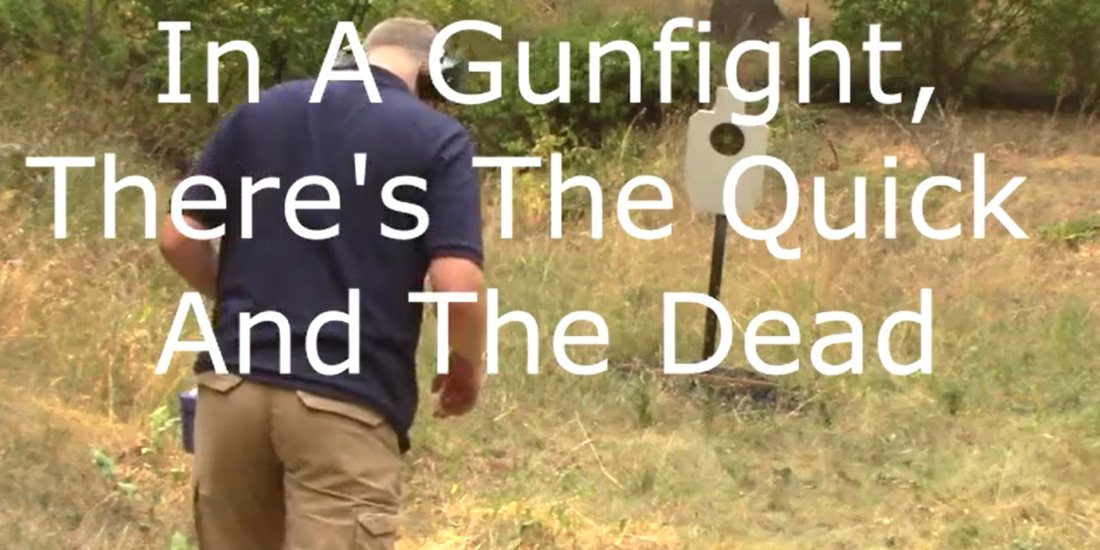The BEST Caliber For Defensive Pistols

If your hackles went up and you assumed a war footing when you read the title of this article, you’re not alone. 🙂
The debate between projectile sizes has been raging since Cain was deciding on whether to use a small rock or a big rock to kill Abel (if, in fact, he used a stone 🙂
Sometimes it matters, and sometimes it doesn’t, but in the instances where it matters, there aren’t any do-overs.
So, what’s the answer?
Your ability to quickly put high quality rounds on target has a much bigger impact on whether you are going to be able to stop a threat than the caliber of ammunition that you happen to be sending downrange.
And that’s exactly the conclusion that the FBI came to. All pistol rounds suck, so go with the one that will allow you to practice the most and put the most accurate rounds on target in the shortest period of time.
There IS a place for the 9 vs. 45 stopping power debate, but for most people, it is an extremely low leverage part of the defensive shooting equation.
If you get into this discussion, there’s a time component that you have to be aware of. 9mm defensive rounds from 2023 are so different from 9mm defensive rounds from 2000, or even 2007, that they should almost have a different designation.
The arguments that you see, read, or remember from 5-10 years ago about which caliber or bullet is best probably don’t apply to the upgraded bullets we have today.
On the whole caliber thing, there ARE some calibers that are better than others. I would never suggest that someone carry a .25, and there are very few people who I would suggest carry a .44 magnum unless you’re in bear country.
99 times out of 100, your ability to put fast, accurate shots on target is going to be more of a factor of whether or not you can stop a threat than whether it’s a 9, .38, .357, .40, .45, .22, .380 etc. coming out the end of your barrel.
I even carry a .22 revolver fairly often, but only a revolver because of the inherent reliability issues with rimfire semi-autos with a less-than-perfect grip.
And what IS the best caliber for defensive pistols? It’s the caliber that allows you to put fast, accurate, threat stopping shots (likely plural) on as many targets as are posing a violent threat to you before they are able to impose their will on you.
Let me share a picture with you…
That’s a Speer Gold Dot 9mm after punching through a car door like butter. So if you know one of those guys who are wrapped around the axle about a 11mm (.45) hole being better than a 9mm hole…to the point of carrying .45ACP ball ammo, this might give them something to think about.
Keep in mind that a .45 hollowpoint will expand too, but the latest FBI stats show that it takes an average of 3 rounds of 9mm, .40 or .45 to stop a threat, so that extra expansion doesn’t seem to be increasing effectiveness very much. And none of them have the kinetic energy to blow out a lung.
And, in response to questions/comments, here is some comparative penetration tests of hollow point defensive ammunition:

It’s only when you’ve maxed out your ability as a shooter that
caliber becomes an issue.
Time and money spent developing, fine tuning, and sharpening your technique has a LOT more leverage than switching guns, triggers, springs, grips, or ammo.
And that’s why I want to encourage you to check out Chris Graham’s 30-10 at-home pistol training course by going to 3010Pistol.com
Chris passed away last year. He was a dear friend and an incredible instructor. As a Force Recon Marine, he worked alone “in Indian country” with an Iraqi paramilitary force under constant threat of assassination and kidnapping, hours from US backup, and normally only armed with a concealed pistol. Few people in the world have the ability to speak about fighting with a pistol with as much authority as Chris does in his training.
Before he passed, he provides advanced weapons and tactics training to personnel prior to deployment to high-threat zones.
If you’re an instructor, you want to be gleaning lessons from Chris’ training.
If you’re a shooter, Chris’ training is based on first hand experience downrange against determined attackers as well as constant feedback from his students. His teaching isn’t stuff that worked 5, 10, or 15 years ago…it’s stuff that one or more of his former students have more than likely used in the last few months, weeks, or even days.
I want to encourage you to learn more now by going to 3010Pistol.com







